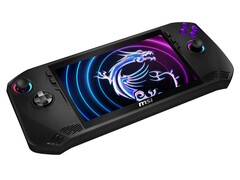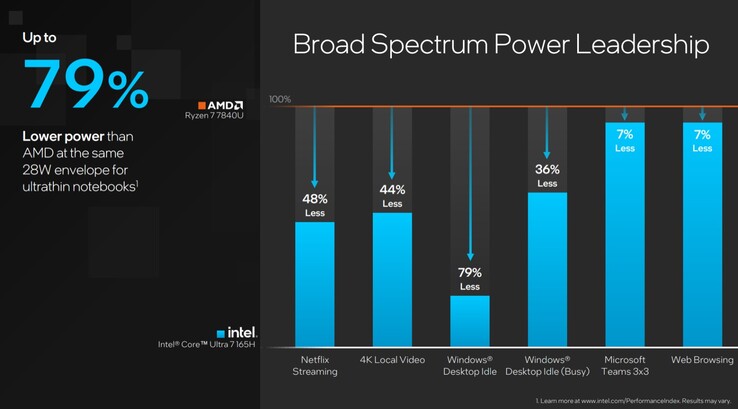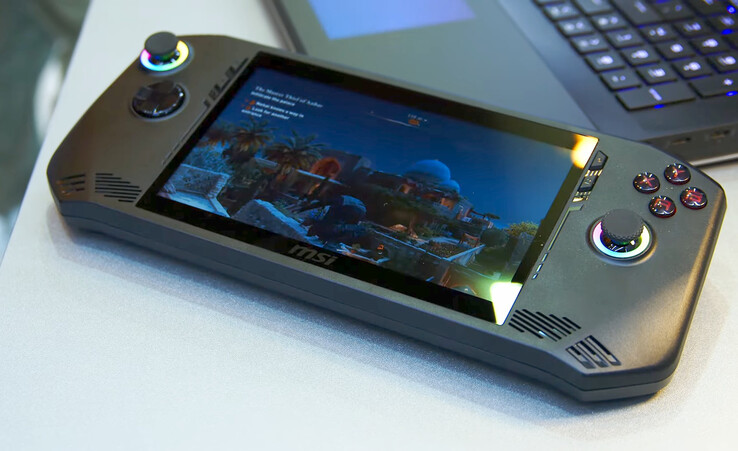There are certainly reasons to be excited about the Claw's arrival, with its use of hall-effect triggers and sticks and a variable refresh rate display particularly interesting, but there are also unknowns and roadblocks over the core basics that mean consumers should temper their expectations before getting carried away over those premium features.
1: Power-hungry hardware
In spite of Intel's big marketing push, the Core Ultra 5 and Ultra 7 CPUs don't seem to be very efficient for a gaming handheld. Though their Arc integrated graphics can match the Radeon 780M in rival devices like the ROG Ally (and by extension exceed those of the Steam Deck), can only do so when blasting power to the max. Intel's Core Ultra 7 brought the Acer Swift Go within touching distance of the Ryzen 7 7840U in The Witcher 3 according to our recent review, but had to chew through around 61W of power to get there, 50% more than the 40W used by the AMD-powered Thinkpad T14.
In fact, early tests that have leaked out seem to confirm this – with the Claw falling further and further behind the ROG Ally in Shadow of the Tomb Raider as the power budget shrinks, it seems Meteor Lake's vaunted efficiency in lower power states disappears quickly when you want to do more than leaving it idle or streaming videos.
2: Unimpressive pricing
With pricing now confirmed by MSI, it doesn't look like the Claw will be entering the market with the hopes of being a cut-price disruptor. Though it seems like the cheaper $699 Ultra 5 model will get the same graphics capability as the $799 Ultra 7 – as opposed to, say, the "G7" in the i5-1135G7 and the i7-1165G7 being different back in the day – that's still not a fantastically compelling price. Not only is that cheapest model more expensive than even the highest-end, limited-edition Steam Deck OLED (and a leap of 75% over Valve's cheapest offering!), but it's also only matching the top model of Asus's ROG Ally, which is already starting to see strong discounts like $100 off at Best Buy.
Handheld devices like these will mostly see use as secondary devices on top of a laptop or PC, a luxury more than a necessity, and for that market every penny counts. Then again, with Intel charging over $500 for even 1000-unit bulk orders of the Ultra 7, MSI likely don't have a lot of wiggle room to work with.
3: Unproven software
On this front, there's just no getting around the elephant in the room – that the Claw is still going to be running Windows. Sure, MSI have touted their first-party MSI Center M software to help run the device, but if its own setup guide is anything to go by, all it really does is system updates and a handful of utilities (like RGB, of course); nothing to simplify the gaming experience or to make the desktop OS any more usable on a tiny 7-inch display.
And even if MSI end up making a slick, polished system launcher, that doesn't mean that Windows won't sap performance with its bloat or spontaneously decide that it suddenly needs a P-core running at 4+ GHz in order to manage file indexing, or such similarly inane. Or, for that matter, that Intel's own software will do its job properly – rather than needing years to reach maturity like its Arc desktop graphics drivers, or being gate-kept to future architecture generations like its Application Optimizer nearly was.
4: Incumbent competition
If you've read a certain past article from me, this list might seem a bit familiar. And that's because it is. Details might change – the Deck's new OLED model comes with a price premium, and the Claw using Intel's Meteor Lake CPUs is a much bigger hardware-level difference than previous handhelds – but the key points remain the same. With the ROG Ally and the Legion Go competing in this premium price class, MSI clearly see the Claw's Intel SoC as a differentiating factor, along with the external GPU capability it brings with it.
And sure, for those willing to strike out from Valve's curated garden, the Claw might be an interesting alternative to its Asus and Lenovo rivals. The big question is: does it have the basics nailed down first?
Source(s)
Own, Intel.

















